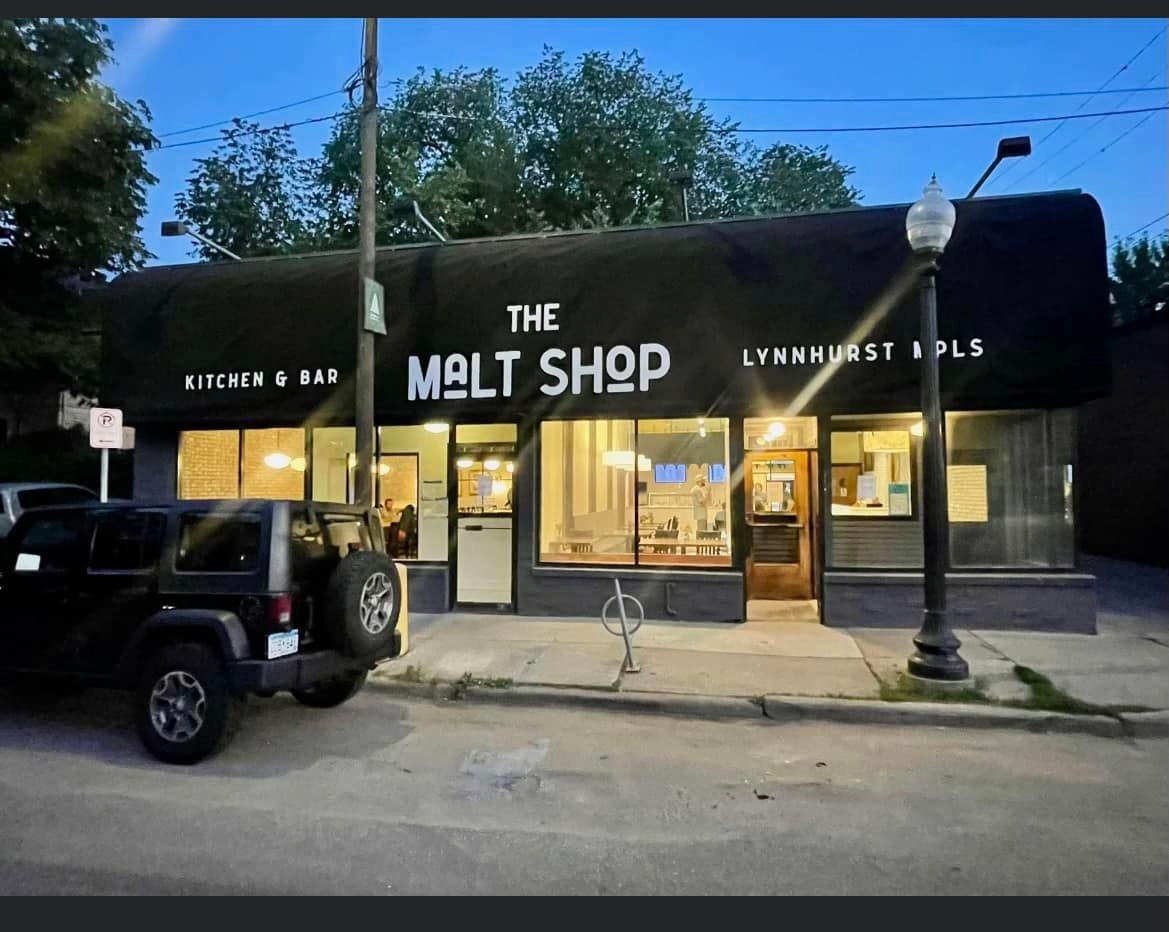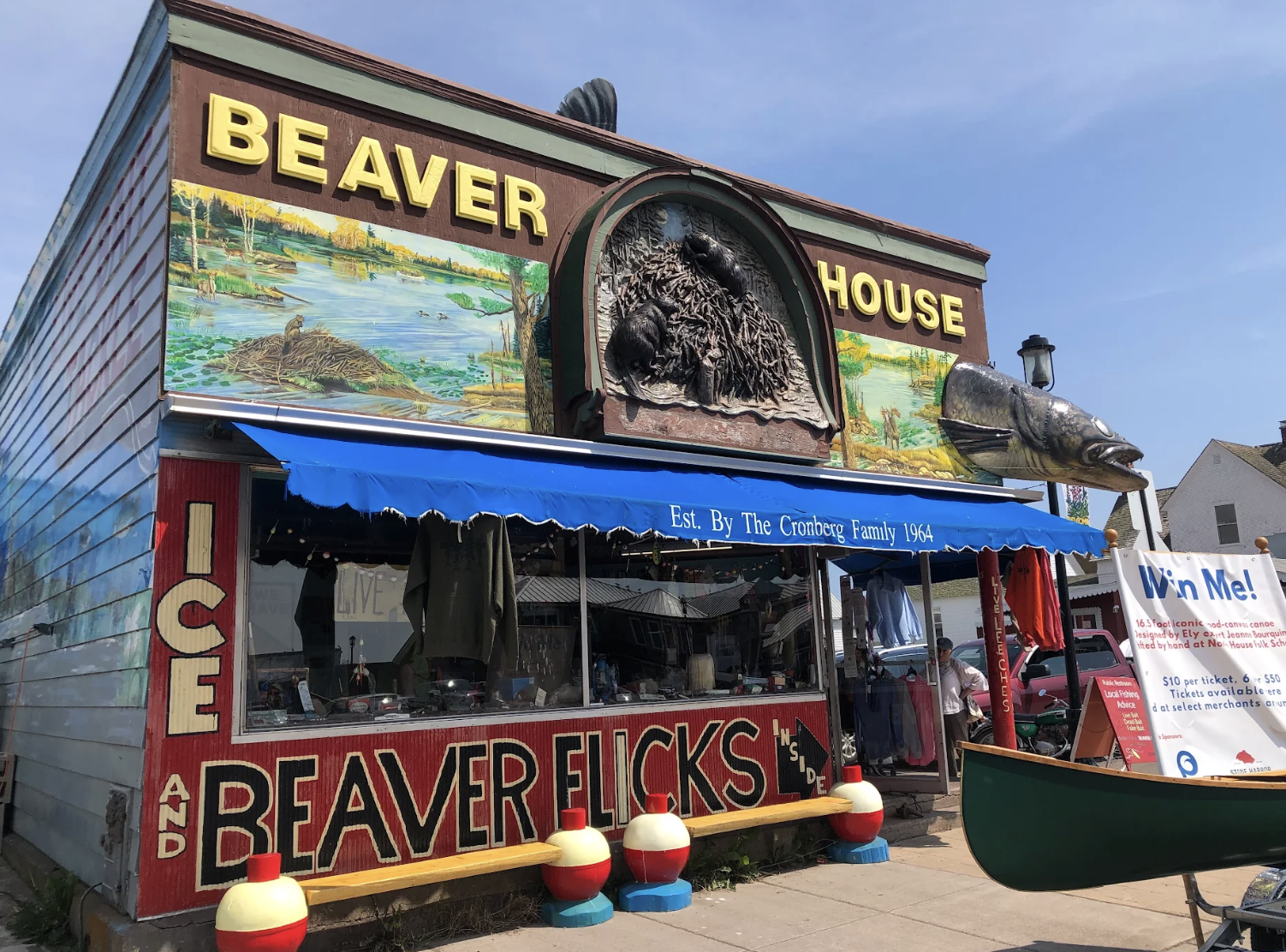Welcome back to The Flyover, your daily digest of important, overlooked, and/or interesting Minnesota news stories.
The Malt Shop Cometh... Backeth
If you're anything like me, Racket's resident townie Jay Boller, your south Minneapolis childhood included visits to The Malt Shop, a neighborhood institution since 1973. The no-nonsense burgers rocked; the ginormous malts rocked; that easy-breezy pre-9/11 hiccup in time, depending on your lot in life, generally rocked.
Original proprietor Richard Henke ran the spot until 2022, when he offloaded the building to Arbor Commercial Group and restaurateur Rebecca Illingworth Penichot took the reins. A year later Illingworth Penichot, who has since relocated to France, transferred the lease to Ryan Braski. Online reviews of the post-pandemic Malt Shop were uncharitable ("Something called The Malt Shop should not have a chef," one Redditor posits, accurately), and earlier this year the restaurant closed after failing to retain its liquor license, Southwest Voices reported in March.
Here's the potentially good news: A new owner is now poised to carry The Malt Shop mantle, if we're to believe this recently launched placeholder website. "With a refreshed vibe and a return to everything people have always loved, The Malt Shop is back to being the place where friends meet, families gather, and good food brings everyone together—any day of the week," the site reads, while social media accounts tease "the latest craze—dirty sodas."
All those em dashes are a bit disconcerting—they're telltale quirks of AI marketing copy. At any rate, the idea of restoring things to pre-pandemic Malt Shop vibes is A-OK with us, even as we suffer terms like "latest craze." Attempts to connect with the new ownership were unsuccessful, but we'll hopefully get you the malted scoop soon.
DNR, Northshore Mining Co. Sued Over Milepost 7 Expansion
The most-read Racket story of 2023 was headlined, "There’s a Massive, Hidden Lake of Mining Residue Above the North Shore. It Might Grow." The potential 650-acre expansion of that 2,150-acre North Shore tailings basin—aka a giant manmade lake that's intended to store mining waste in perpetuity.
Last month, environmental advocacy org WaterLegacy sued owner Northshore Mining Co. and the Minnesota Department of Natural Resources, Jimmy Lovrien of the Duluth News Tribune reports. In the lawsuit, WaterLegacy included drone photos that appear to show that the expansion is well under way, despite a recent court ruling that demanded DNR slam the brakes. The suit alleges that parent company Cleveland-Cliffs violated the Minnesota Environmental Policy Act by beginning construction before the environmental impact statement (EIS) got sorted out. “Defendants’ conduct may have already undermined effective EIS review and created an emergency dam instability situation,” writes Paula Maccabee, executive director of WaterLegacy.
Last year the DNR decided that a more involved environmental assessment worksheet (EAW) wasn't required for the expansion, and that Northshore Mining Co. could begin its delicate construction project uphill from Lake Superior. But, this past February, the Minnesota Court of Appeals said not so fast, ordering the DNR to reconsider the decision. The Minnesota Supreme Court upheld that decision the following month, following a challenge from the DNR.
The DNR wouldn't comment directly on WaterLegacy's lawsuit, though agency spokespeople did confirm “The EAW for the proposed project is now back with the DNR for further consideration," adding that the 2024 approvals for expanding Milepost 7 are "no longer in effect." Cleveland-Cliffs representatives ignored Lovrien's request for comment.
Park Bench Pics and Local LEGO Builds
You've heard of The Real Housewives of Salt Lake City. Now get ready for “The Real Benches of the Minneapolis Park System."
That's the name of the new video series from Minneapolis-based photographer and videographer Riley Bruce, who tells MinnPost's Jim Walsh the idea was actually born from another series—since January, Bruce has been conducting a “365 days of sun” quest, sharing sunrises and sunsets on Instagram and TikTok.
“Benches are cool, benches are really important, benches are punk rock, and they are in a lot of ways, counterculture, right?” he tells Walsh, seated in his favorite rainbow-painted bench in Powderhorn Park. “Like when I look at this bench, it’s the bench that first made me love Minneapolis park benches because a neighbor, or a series of neighbors, since I have known of the existence of this bench, have made sure that every year it is repainted. It is, like, a ‘gay bench.’"
The bench in question was even repainted earlier this year to remember Sam Nordquist, the Minnesota trans man who was killed earlier this year in New York.
In other "artsy fellas with fun hobbies" news, the Star Tribune's Rachel Hutton has a wonderful story (gift link) about Jeff Esler, who's been making LEGO builds of Minnesota landmarks from Matt's Bar to Split Rock Lighthouse to Nye’s Polonaise Room (complete with the World’s Most Dangerous Polka Band). It's worth a click for Alex Kormann's adorable photos alone.
Let's Explore Minneapolis's Schieks Cave
You had us at "a lake of warm sewage"—a recent installment of The Atlas Obscura Podcast takes listeners down into Schieks Cave, a "geologic anomaly" beneath downtown Minneapolis, hidden by just a manhole cover, that stretches for a full city block.
"It was just the sense of remoteness," Minneapolis-based urban explorer Greg Brick says. "You got this cave 75 feet below street level, with a well-known history dating back to 1904, and nobody that I was aware of had been there."
We've covered Brick's discovery via Atlas Obscura in the Flyover before, but it's fun to hear him chat at length with host Dylan Thuras (himself a onetime Minneapolis resident) about the heat island hidden beneath downtown Minneapolis—how he found it, what he's learned about it, and the impact it could have on science.
Correction: A previous version of this article named Rebecca Illingworth Penichot as the most recent ex-owner of The Malt Shop. It has been updated to show that Ryan Braski holds that distinction.







